Novel artificial spider silk with water collection efficiency enhanced by 100 times
There is no Spider-Man in reality. To have materials with high toughness and hydrophilicity like natural spider-capture-silk, we still need to count on the effort of scientists. Recently, a research team from City University of Hong Kong (CityU) has fabricated a fibre mimicking the structural properties of the natural spider-capture-silk. The fabricated all silk-protein fibre is very light, with a diameter even much smaller than a human hair. More importantly, its extraordinary directional water collection capability offers potential for its application in outdoor water collection or even as biomedical materials.
The research is led by Professor Hu Jinlian, Professor from CityU’s Department of Biomedical Engineering (BME) and Director of Laboratory of Wearable Materials for Healthcare. The findings were published in the scientific journal Advanced Functional Materials, titled “A Spider‐Capture‐Silk‐Like Fiber with Extremely High‐Volume Directional Water Collection”.
Using genetic-engineered spider silk proteins
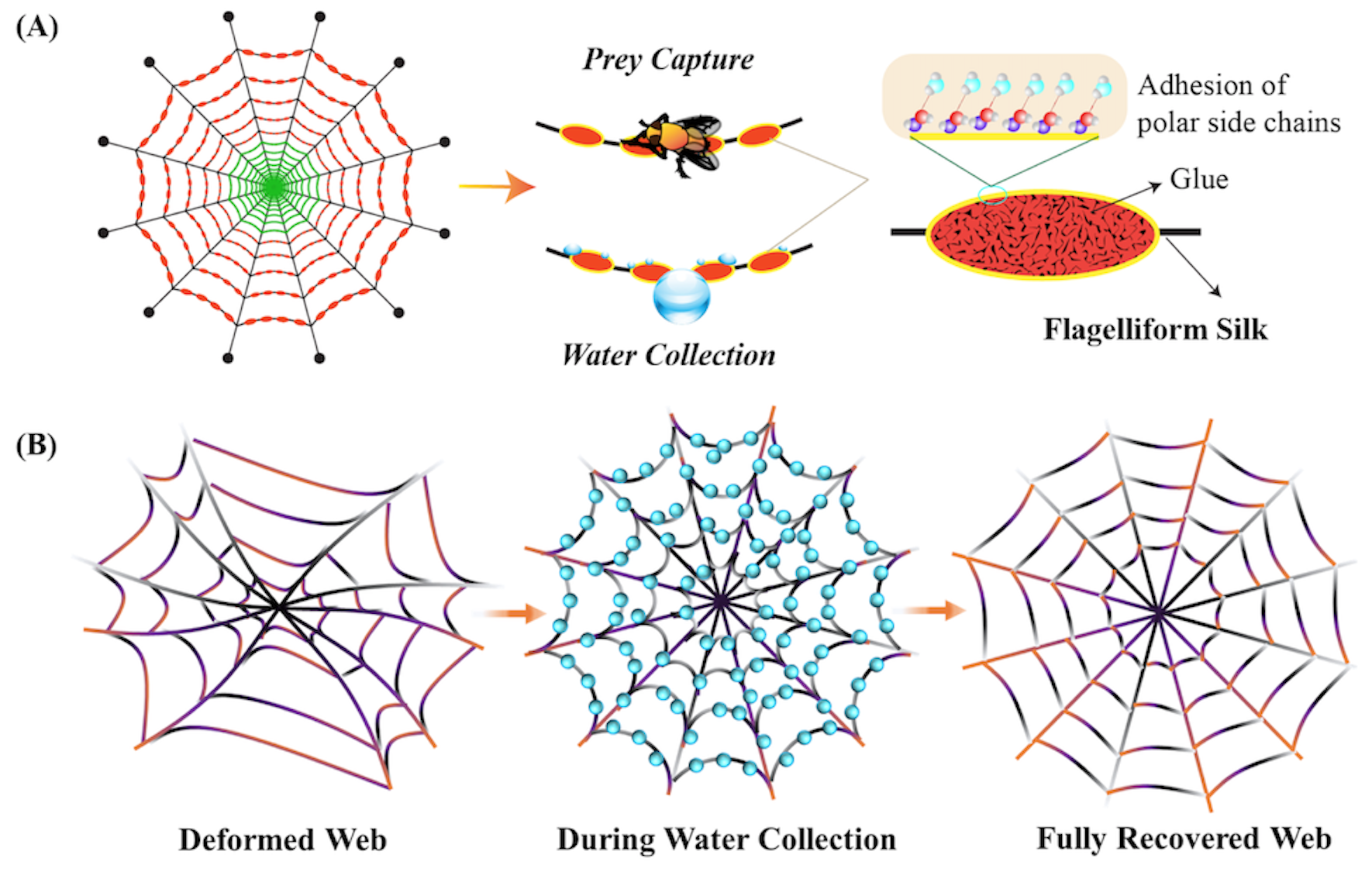
Spider-capture-silk has unique node structure with periodic spindle knots on it. This special structural feature together with the hydrophilic nature of spider-capture-silk allows the directional collection of water droplets from the atmosphere. Water droplets condensed on spider webs would converge towards the centre. Moreover, spider-capture-silk is very tough. And it would contract to its original length when it is wetted. Therefore a spider web deformed due to the struggle of the preys could resume its original shape in the presence of humidity.
“These characteristics have aroused the interest of the scientific community. But collecting silk from spiders is time-consuming and troublesome, so scientists have been developing different methods to fabricate new materials with similar characteristics, which could be used for example as threads for surgical suture,” Professor Hu introduced.
While Professor Hu’s research focus is on textile materials, she has also been spending years in biomimicry of spider silk. Currently, most of the artificial silk is nylon-based with a coating of different materials on the surface. However, Professor Hu points out that when compared to nylon, silkworm silk is not only biodegradable but also exhibits better moisture absorption ability and thermal stability. Therefore the team has chosen silkworm silk as the raw material in fabricating the new artificial silk.
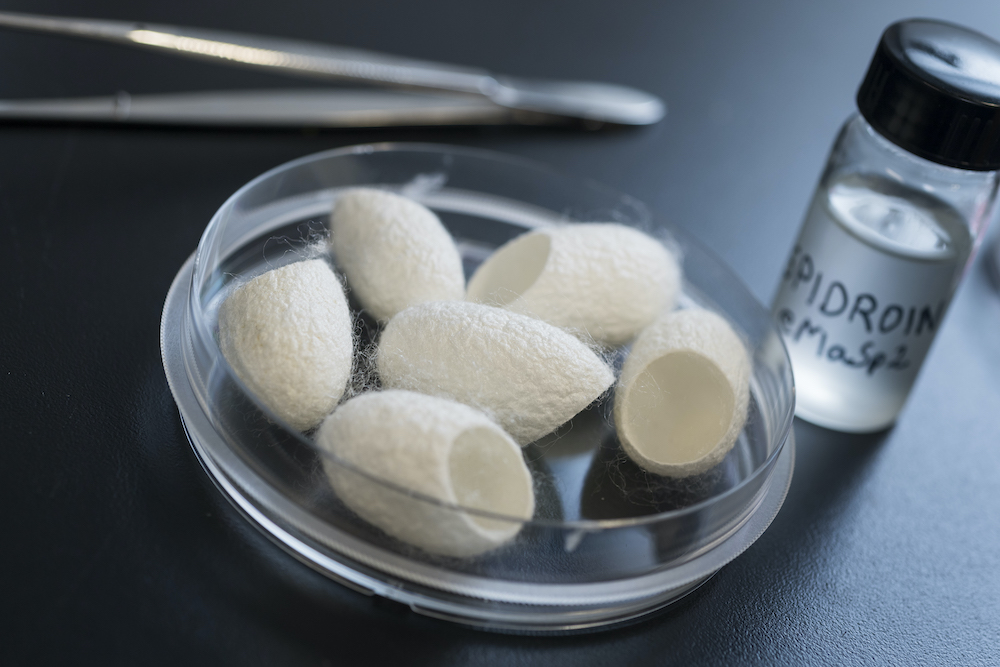
The team first prepared a recombinant spidroin (spider silk proteins) called eMaSp2 through genetic engineering. Nodes found on the natural spider silk are mainly composed of hydrophilic and sticky glycoproteins, which is rich in three types of amino acids, namely serine, glycine, and valine. Resembling the hydrophilic glycoproteins, eMaSp2 is also rich in those three types of amino acids, thus endowing good hydrophilicity.
Degummed silkworm silk fibre was then immersed in the eMaSp2 solution using the dip-coating method. After taking out, a thin film of the solution was formed on the surface of the fibre. Because of the Rayleigh instability, meaning that liquid tends to minimize its surface area and hence breaks into a steady stream of droplets due to surface tension, the solution film later broke into tiny drops and distributed along the fibre. These tiny drops on the fibre were just like the periodic spindle knots found on natural spider-capture-silk.
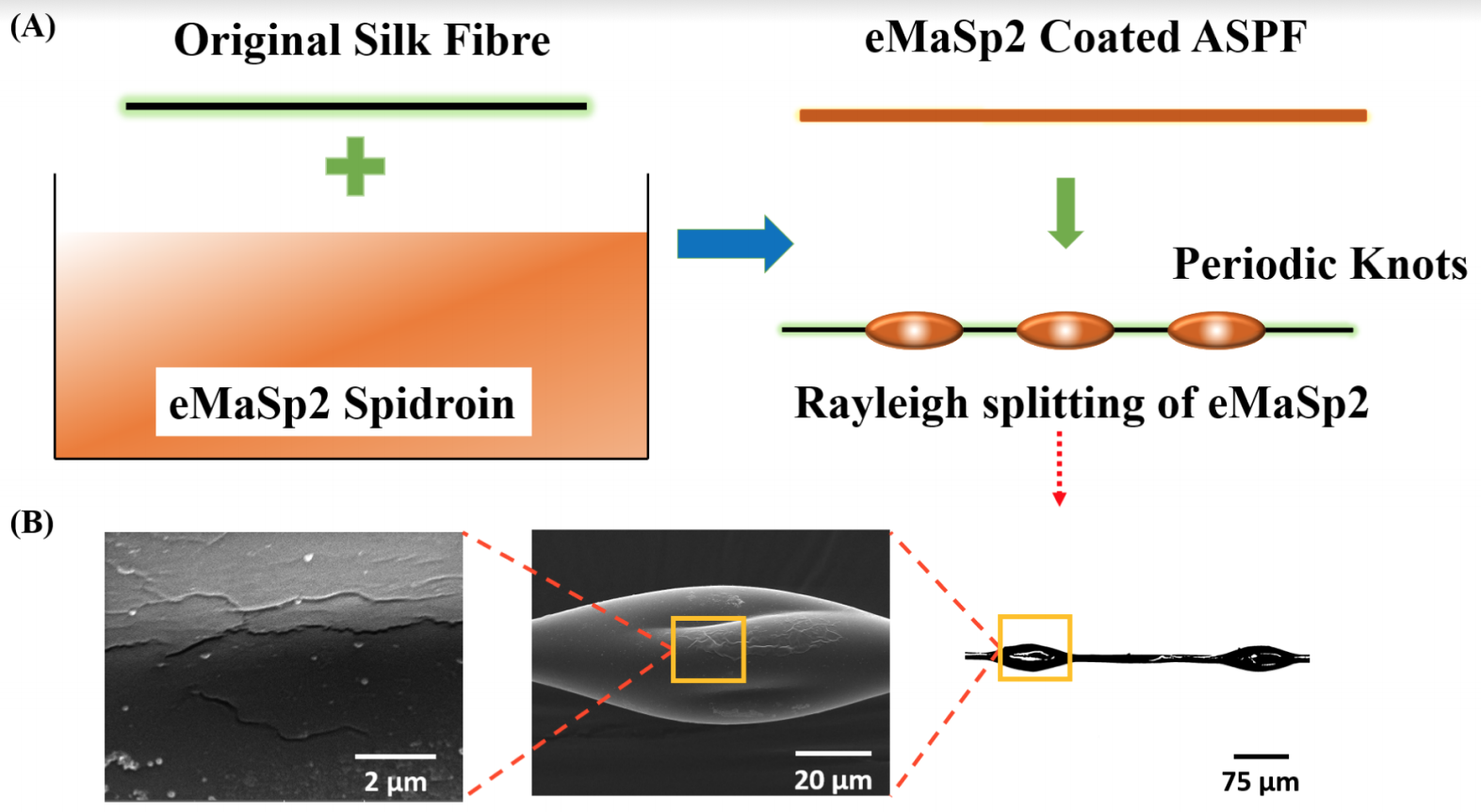
Viewed under a microscope, the surface of the formed “knots” showed roughness similar to that on the natural spider-capture-silk. “The rough surface increases the contact area between water and silk fibre, thus enhancing the water collection capacity,” explained Professor Hu. “From physical structure to chemical properties, the all silk-protein fibre we fabricated has achieved an all-rounded biomimicry effect,” she added.
Experiment results prove impressive water collection capability
The team conducted experiments to test this artificial silk. Results showed that the water collection capability of the degummed silk fibre was greatly enhanced after dip coating with the eMaSp2 solution. Water molecules were accumulated around the “knots” to form tiny drops and then gradually grew bigger and bigger through merging with the neighbouring ones. The big droplets remained hanging on the fibre until the gravity exceeded the interfacial tension between the water and fibre.
The team also observed that water droplets would fall off at 250 seconds for the silk fibre without eMaSp2 “knots”. On the other hand, for the fibre with eMaSp2 “knots”, water droplets could stay up to 690 seconds. “The maximal water volume collected by our all silk-protein fibre is almost three times of the degummed silk fibre without ‘knots’, which was a surprising result,” said Professor Hu.
Water molecules accumulate around the “knots” to form tiny drops and gradually grow bigger and bigger after merging with the neighbouring ones. (video source: DOI number: 10.1002/adfm.202002437)
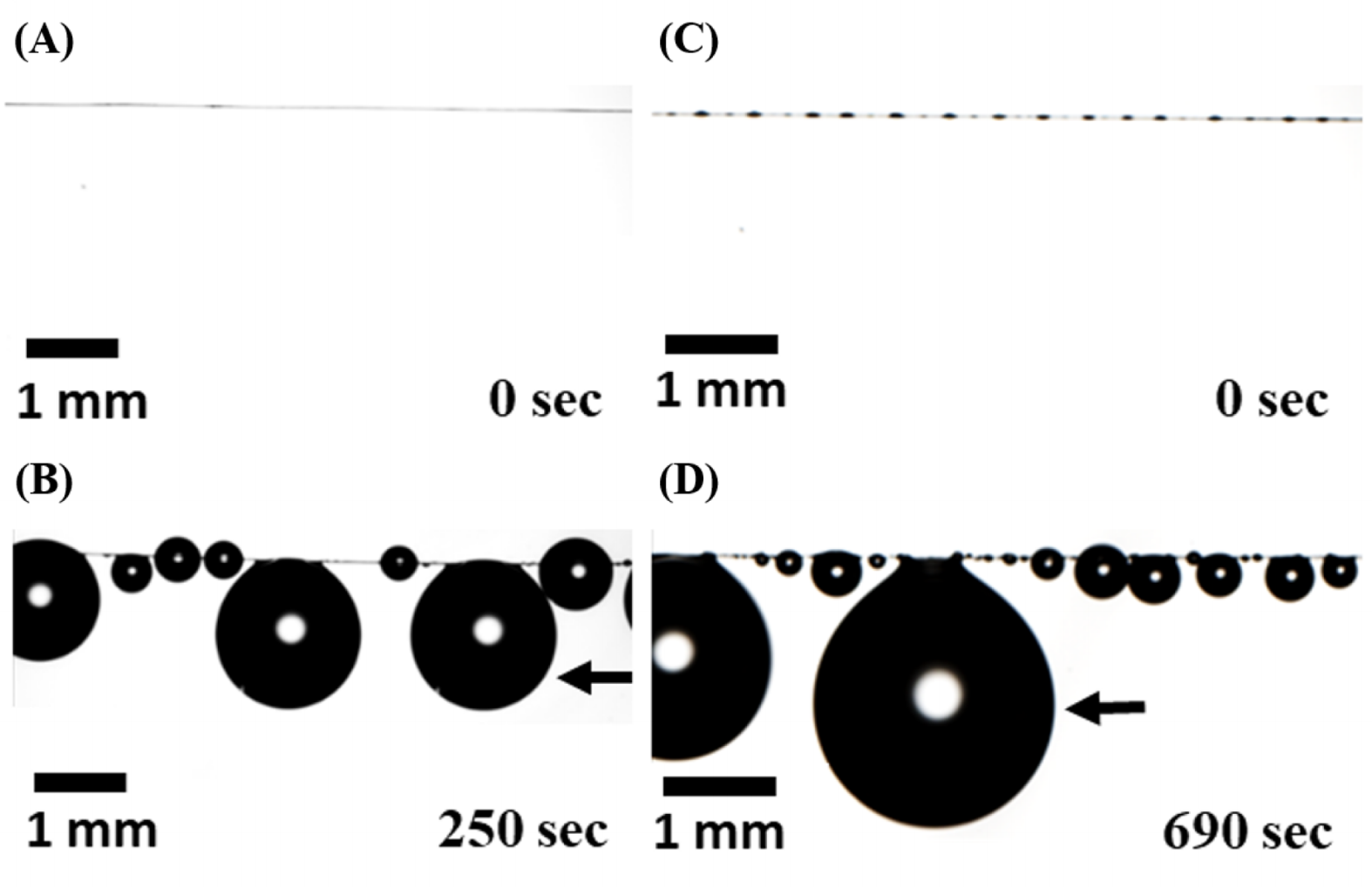
Professor Hu pointed out that although the maximum water collection volume of the all silk-protein fibre was only one-third of the highest record achieved by synthetic polymer-coated nylon, it is 252 times lighter and 100 times higher in water collection efficiency (volume-to-mass ratio). “When compared with the same amount of water collected, the diameter of our fibre is smaller than the nylon fibres. So all silk-protein fibre showed better performance in terms of water collection efficiency,” explained Professor Hu.
Professor Hu’s team will further explore the actual application of this new material. She believed that this lightweight material could be used for outdoor water collection in places like deserts because it is easy to carry and handle. Moreover, the material is biodegradable. And with the harmful gum coating removed, it might be possible to be used as biomedical materials compatible with the human body.
She added that although the use of recombinant spidroin was relatively costly, only a small quantity of it was needed to fabricate the fibre. By integrating with the commercialized silkworm silks production and the matured dip coating method, she believed that the all silk-protein fibre showed potential for scalable production.
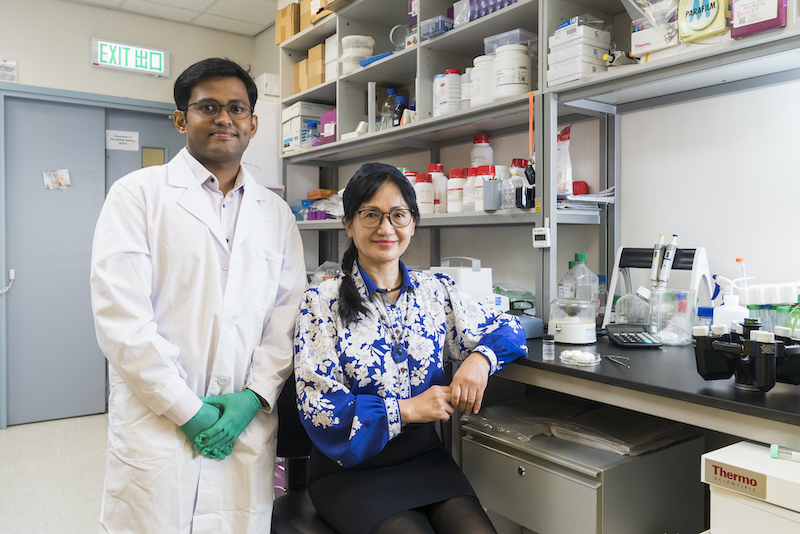
Professor Hu is the corresponding author of the paper. The co-first authors of the paper are Dr Harun Venkatesan from BME, and Dr Chen Jianming from the School of Biomedical Engineering, Sun Yat-sen University. They are both Professor Hu’s PhD students. Other research team members are from Shenzhen Bay Laboratory and Shenzhen Peking University-The Hong Kong University of Science and Technology Medical Center.
The study was supported by the Research Grants Council of Hong Kong and the National Natural Science Foundation of China.
DOI number: 10.1002/adfm.202002437